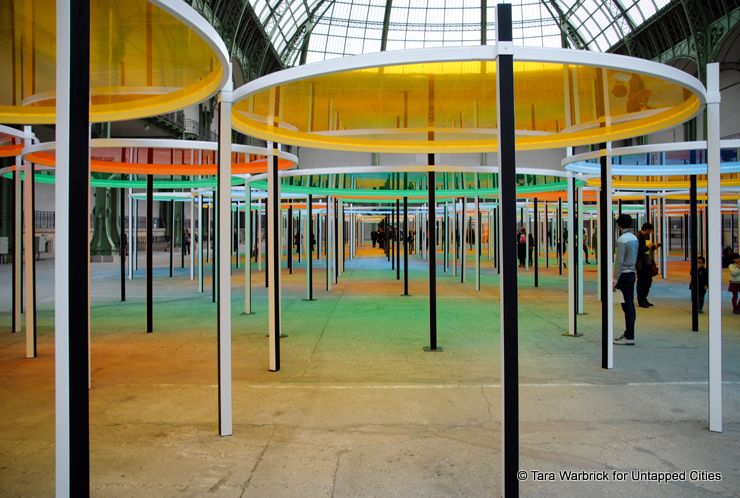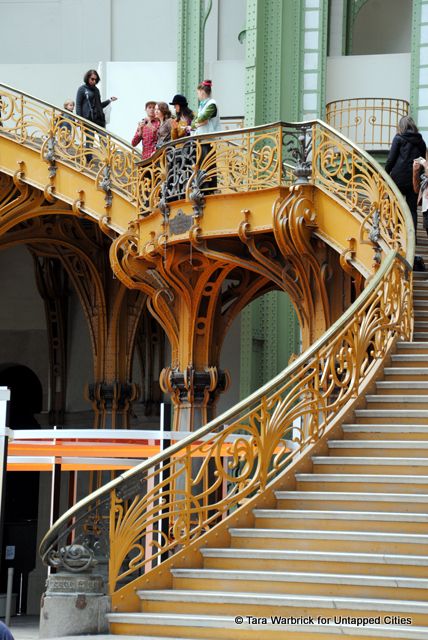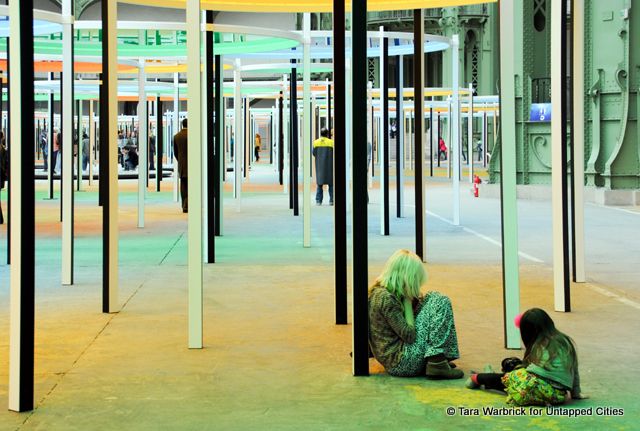A Salvaged Banksy Mural is Now on View in NYC
This unique Banksy mural goes up for auction on May 21st in NYC!


French artist Daniel Buren is behind this year’s Monumenta installation, which has been drawing visitors en masse over the last few weeks to the majestic nave of Paris’ Grand Palais.

Already well known to Parisians, Buren’s works are site-specific and his parameters of ‘creating’ are derived from analyses of existing site and context. A fine example of this is Buren’s controversial Les Deux Plateaux, installed in the courtyard of the Palais Royal in 1983. The immense controversy and divided reception over this piece certainly raised Buren’s profile on the world stage. With In Situ, Buren has used the geometry and layout of the Palais’ nave and dome, among other contextual influences, to rationalise the layout of a series of coloured plastic canopies stretched over steel frames.
“Because of its size, its beauty and history, [the Grand Palais] is one of the most difficult places for an exhibition,” Buren said on commencing the Monumenta installation. Despite his apprehensions, In Situ is relatively playful. The frivolous orange, blue, green and yellow tensile plastic canopies are contrasted with the restrained and gridded black and white canopy frames. The canopies are all roughly set at the typical ceiling height of a Parisian apartment, creating an intimate space for visitors as they move through the nave and below the grandeur of its glazed vaulted roofs. The central dome itself has received some blue coloured plastic. Despite the extent and number, the canopies recede within the majesty of the nave.


As the intensity of the sun changes in the Paris sky above, so does the coloured light cast onto the floor below. When the sky dulls, the canopies become reflective, visitors animating the space below canopies with their own movement. Barely audible sounds permeate from the fringes of the nave, and at night roving spotlights turn the installation into something of a disco.
Visitors can pause at the cafe for a psychedelic lunch or refreshment break. The rear mezzanine provides an elevated spot from which the entire extent of the installation can be perceived and all of the coloured canopies are visible. Centrally located mirrored podiums reflect a view of the coloured dome and sky, above.




Last year’s Monumenta Leviathan installation by Anish Kapoor certainly made an impact, and provided subsequent Monumenta artists with a very hard act to follow. Kapoor’s gigantic pneumatic balloon sat proudly within the Grand Palais nave, a truly monumental piece. In Situ certainly respects the grandeur of the space, and is subordinate to the ‘size, beauty and history‘ of the nave.

The installation is a delight to visit, though one can’t help but wonder whether Buren’s parameters for design and creating could have been slightly relaxed, and if the installation might benefit from being more interactive.
Pre-purchasing tickets ahead of time online can save time if you are unable to get there during the week, but get there quickly as In Situ runs until the 21st of June.
As Untapped wrote last year, the Grand Palais plays host to the annual La Nuit Electro, last October’s edition was a stunner headlined by SBTRKT, Modeselektor, Crystal Fighters and Cassius among other electronic music greats. Details of the 2012 edition have not yet been announced, but keep an eye on the SFR La Nuit Electro site.

How to get there:
Avenue Winston-Churchill, 75008 Paris [Map]
Metro: Champs-Elysées Clémenceau or Franklin D Roosevelt
Website: https://www.monumenta.com/en
Get in touch with the author @twarbrick.
Subscribe to our newsletter